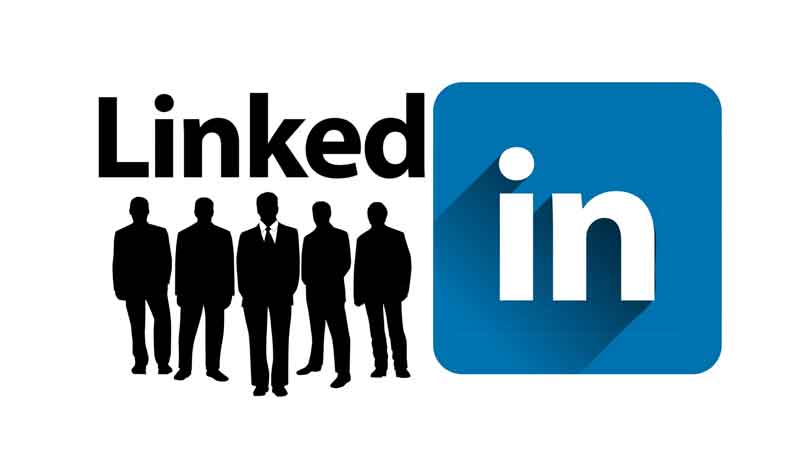Now that you’ve identified which accounts are researching your product, it’s time to launch your campaign. But before you do that, it’s important to know how to craft the perfect target segments and messaging so you can make sure your ads are as effective as possible.

1. Build a list of targeted accounts
Cast your net wide, then narrow it down as you learn more about your audience. LinkedIn recommends targeting a minimum of 1,000 accounts, so using that number as a baseline is a good place to start.
When creating copy and visuals for your ads, keep in mind that buyers at each stage of the funnel have different intents.Therefore, you’ll need to have different content types locked and loaded for each stage.
TOFU: Helpful ad content includes blog posts, educational videos, and user reviews.
MOFU: Helpful content includes reports, whitepapers, and buyer’s guides.
BOFU: Helpful content includes competitive comparisons, case studies, and product demos.

Pro Tips: If you’re a small company that is still building your presence on G2, combine all of your intent signals into one list and target them with generic branded ads or ads that showcase your top product features.
2. Map your content strategy to the intent signal
When choosing your ad type, keep your ultimate goal in mind. If you simply want to educate TOFU buyers about your product, your ad may lead them to a blog post or landing page. If you want to collect MOFU buyers’ contact information, your ad should include a lead gen form.
The best approach is to craft a content strategy around each G2 Buyer Intent signal:
CATEGORY PAGE VIEWS:
This is a great opportunity to educate these buyers on your software category. Try serving up an e-book such as “The Definitive Guide to Customer Relationship Management (CRM) Platforms”.
C O M P E T I TO R PAG E V I E WS :
This is the point where you should drive buyers to a landing page on your site that shows the key differentiators between you and your top three to five competitors. If you’re in a crowded software category with some big players, have fun with it. For example, admit that while you may not be Salesforce, there are still plenty of reasons why your solution is a good fit for your audience.
PRODUCT PAGE VIEWS:
Here is where you can lean in and drive demo requests or similar high-value engagement. These buyers know who you are, they’ve looked at your product page, and they’re interested. Go for a MOFU approach to drive demo requests or free trials.
Remember, there’s no one-size-fits-all ad strategy. You’ll need to experiment with different ad types for different audiences until you find the perfect match.
Pro Tips: For BOFU audiences, try Conversation and Single Image Ads. Conversation Ads will help you engage with your target buyers, while Single Image Ads will keep your product top of mind with prospective buyers.
3. Improve your ABM campaigns
Use your intent data as a layer in your account-based marketing (ABM) strategy. Your sales and marketing teams should work together to build targeted account lists based on sales prospect lists and intent data.
Once your cross-reference your intent data account with your sales prospects, you’ll know exactly which ones to target. In this case, your intent data not only provides more accounts to target, but also more context on which ones are high quality.
Pro Tips: Don’t forget about your current customers. Equip your Customer Success team with the right tools and messaging so they can prevent churn by following up with customers looking at product alternatives.
4. Proactively reach out to your high intent accounts
In the early stages of the buying process, it can be hard to figure out exactly what each account is looking for. However, as accounts move down the funnel, their intent becomes more and more clear.
If an account compares your product with one of your competitors, for instance, you can provide them with information that highlights your core differentiators.
In addition to your ads, make sure your sales team is actively reaching out to these accounts. You can even set up Slack or Salesforce alerts for your sales team to instantly reach out to these high intent audiences.
5. Metrics to look for
At the end of the day, your G2 Buyer Intent data and LinkedIn ads are working toward the same goal: helping you pinpoint high-intent prospective buyers so you can guide them down the funnel and close more deals.
You can set up conversion tracking and track your prospects from G2, allowing you to see and understand their entire journey. If your goal is to get more buyers to your website, you can create a G2 reference page on your domain with helpful content like Comparison Reports and 5-star user reviews.
As you saw in the earlier example, CPL isn’t the only thing you should be tracking. In fact, it’s important to take a holistic look at all of your campaign metrics to determine success. Keep in mind that conversion rates, CAC, pipeline, and revenue are key metrics you should look at.
Pro Tips: Instead of using lead generation ads, you can use a landing page to promote your G2 reviews and reduce ad costs.

Shine a light on your prospects
The G2 Buyer Intent + LinkedIn Matched Audiences Integration makes it easy to reach in-market buyers who are actively searching for software solutions like yours. Create intent-powered LinkedIn audiences and target accounts that show interest in your product, competitors, and category on G2.
Don’t be intimidated by the dark depths of social advertising. Integrate your G2 Buyer Intent with LinkedIn Matched Audiences and shine a bright light on those high-intent accounts.

